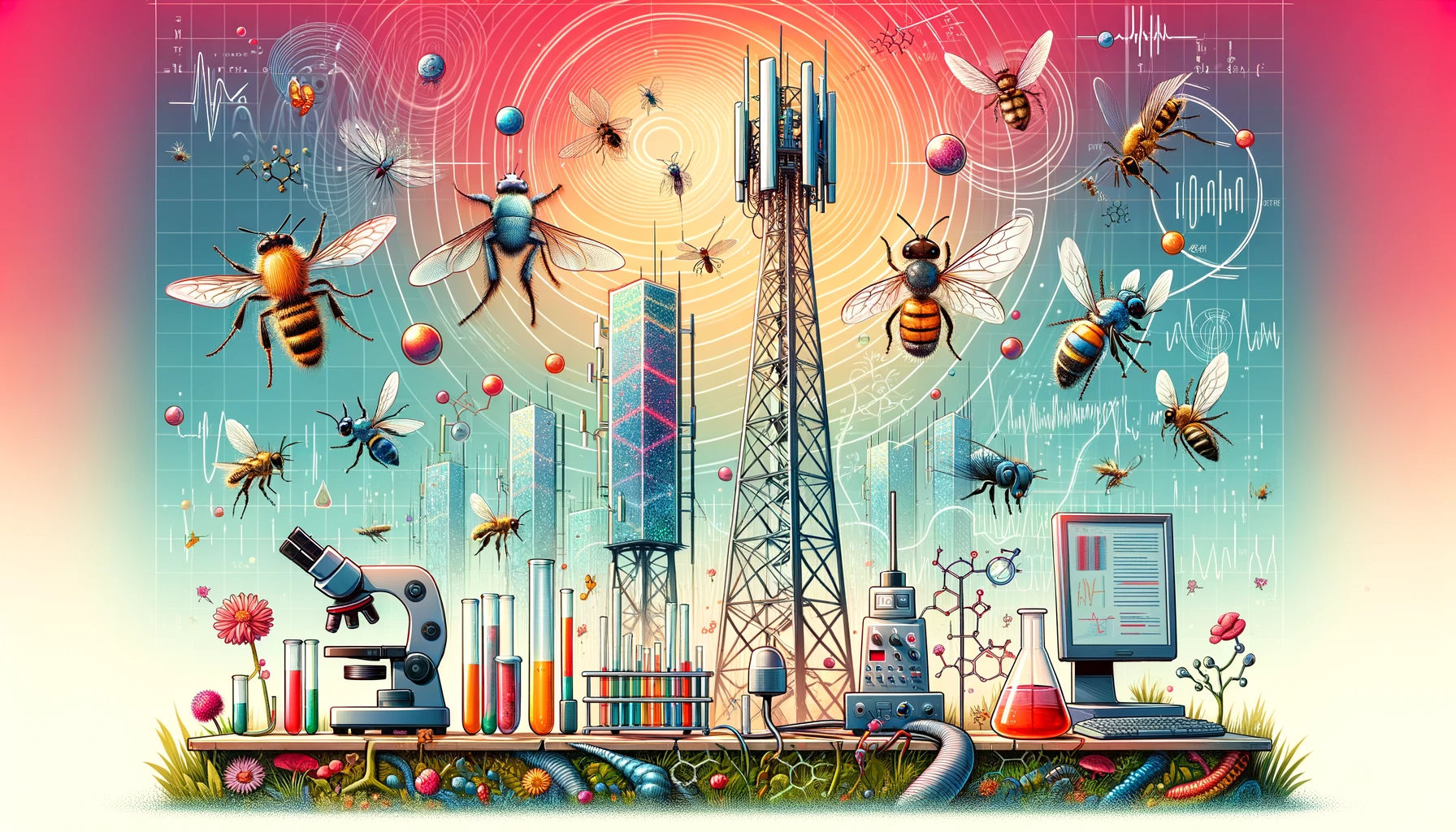Worldwide, insects are declining at an alarming rate. Among other causes, the use of pesticides and modern agricultural practices play a major role in this. The cumulative effects of multiple low-dose toxins and the distribution of toxicants in nature have only started to be investigated in a methodical way.
Existing research indicates another factor of anthropogenic origin that could have subtle harmful effects: the increasingly frequent use of electromagnetic fields (EMF) from man-made technologies.
Unveiling the Impact of Electromagnetic Fields on Insects – A Critical Review
In the realm of environmental health, the effect of electromagnetic fields (EMFs) on insects has emerged as a topic of increasing interest and concern. A recent comprehensive review has shed light on the subject, analyzing 185 papers and 145 studies published since 1980. This blog post delves into the findings of this extensive research, underscoring why this issue demands our attention.
The Growing Body of Research
The review reveals a gradual rise in studies focusing on the effects of EMFs on insects. However, it also points out a general lack of awareness and underfunding in the field of bioelectromagnetics, suggesting that more interdisciplinary knowledge and financial support are needed.
Key Findings from the Studies
- Main Focus of Studies: The majority of the research has concentrated on Drosophila fruit flies and honey bees, using devices like cell phones and coil systems to generate EMF.
- Variability in EMF Exposure: The studies explored a wide range of radiation intensities and exposure durations, from as little as 30 seconds to as long as 8.5 months.
- Meta-Analysis Insights: A significant portion of these studies reported measurable effects, with toxicity estimates indicating potential harm from various EMF sources, particularly from devices like cell phones and signal generators.
- Contrasting Toxicity Levels: Surprisingly, base stations seemed less harmful than cell phones, possibly due to the differences in field strengths and the nature of exposure in controlled laboratory settings versus real-world environments.
- Bioeffects Categories: The research categorized the observed bioeffects into areas like reproductive capacity, developmental effects, oxidative stress, DNA damage, and altered behavior.
Discussion and Implications
- Prevalence of Harmful Effects: The vast majority of studies pointed towards generally harmful effects of low-power LF- and HF-EMF on insects.
- Beyond Randomized Controlled Trials: Although most studies were not randomized controlled trials, the consistency of results across various research groups and methodologies strengthens the case for adverse EMF effects.
- Comparative Vulnerability of Insects: Given their smaller size and existing environmental pressures, insects may be particularly susceptible to the rising frequencies used in mobile phone infrastructure.
- EMF vs. Artificial Light at Night (ALAN): The review draws parallels between the impacts of EMFs and ALAN, highlighting the rapid and extensive introduction of man-made HF-EMF into the environment, which far exceeds natural ambient levels.
Conclusion
This extensive review provides compelling evidence of the detrimental effects of electromagnetic fields on insects, an integral part of our ecosystems. The findings highlight the urgency for further research and a reevaluation of EMF exposure standards, particularly considering the rapid evolution of mobile communication technologies. As we continue to navigate the balance between technological advancement and environmental preservation, the need for awareness and action in this arena has never been more critical.
Study Source: https://www.degruyter.com/document/doi/10.1515/reveh-2023-0072/html








